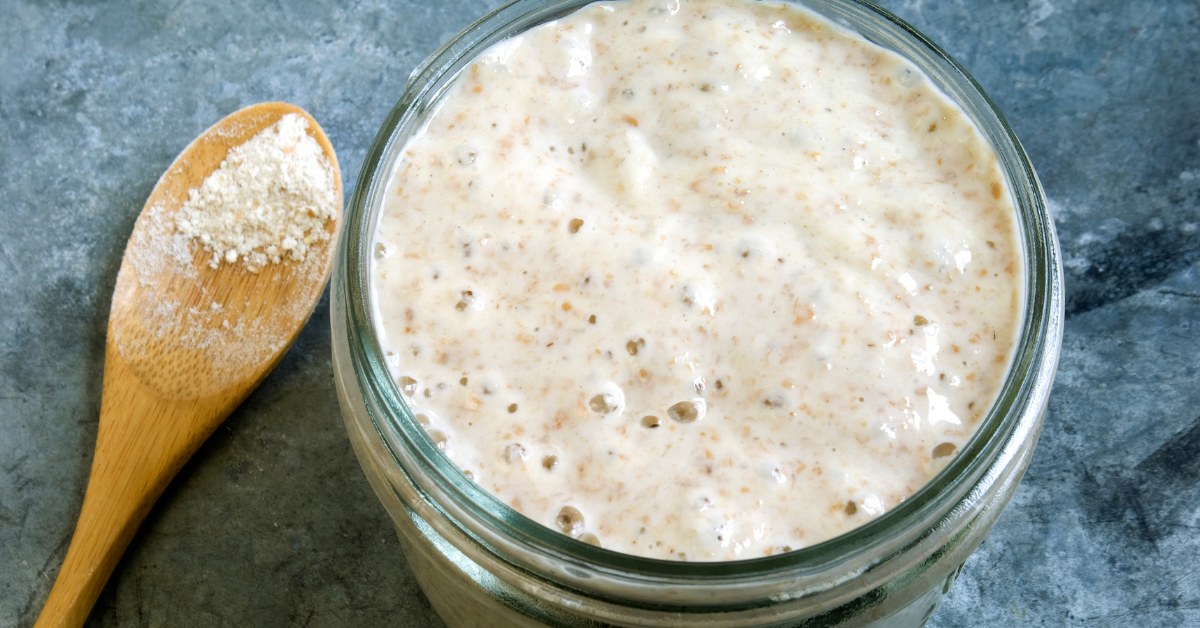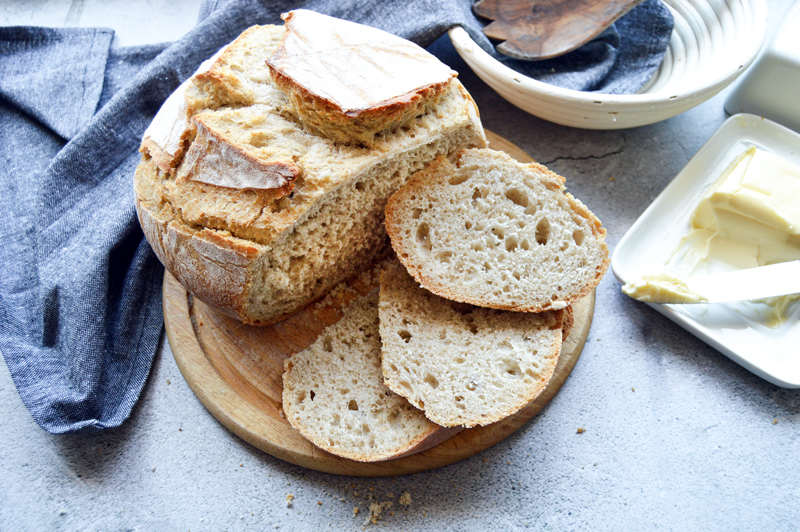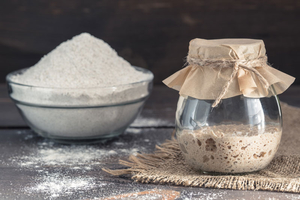How to Create a Sourdough Starter
A step-by-step guide to making your own natural bread starter from scratch
There’s something magical about baking with sourdough. That deep flavour, chewy crumb, and golden crust all come from one thing — your sourdough starter. Instead of shop-bought yeast, sourdough uses wild yeast and naturally occurring bacteria to rise and flavour your bread. And the best bit? You can grow your own starter at home with just two ingredients.

-
Flour – Wholemeal rye flour or wholemeal wheat flour works best to get your starter going (full of natural yeasts and minerals).
-
Water – Filtered or cooled boiled water (chlorine in tap water can slow the process).
-
A jar or container – 1-litre glass jar with a wide mouth is ideal.
-
A spoon or spatula – For mixing, see our eco-friendly utensils.
-
A breathable cover – Such as a muslin cloth or clean tea towel.
-
Combine 100g flour and 100ml water in your jar.
-
Stir until smooth, scraping down the sides.
-
Cover loosely with your cloth and leave at room temperature (ideally 20–24°C).
-
You might see a few tiny bubbles — that’s a good sign!
-
Discard half the mixture.
-
Add another 100g flour and 100ml water, mix well, cover, and leave again.
-
By now, there should be more bubbles and maybe a tangy smell.
-
Discard half, feed again with 100g flour + 100ml water.
-
The starter should be rising and falling each day.
-
Repeat the discard and feed process.
-
If it doubles in size within 4–6 hours after feeding, you’re nearly there.
-
Your starter should now be bubbly, airy, and have a pleasant sour aroma.
-
To test: drop a spoonful into a glass of water — if it floats, it’s ready to use.
-
Regular baking: Feed once a day at room temperature.
-
Occasional baking: Keep it in the fridge and feed once a week.
-
Always feed with equal parts flour and water by weight.
-
Rye flour kick-starts yeast activity faster than white flour.
-
Keep your jar in a consistent, warm spot — avoid direct sunlight.
-
If a dark liquid (“hooch”) forms on top, it just means your starter is hungry — pour it off and feed as usual.
- The magic of sourdough is patience — your starter is a living culture that gets stronger and more flavourful over time. With just flour, water, and a little care, you’ll have your own endless supply of natural yeast for baking.
Once your starter is active, you can make sourdough bread, pancakes, pizza dough, and more. Simply use part of the starter in your recipe and keep the rest fed for your next bake.








